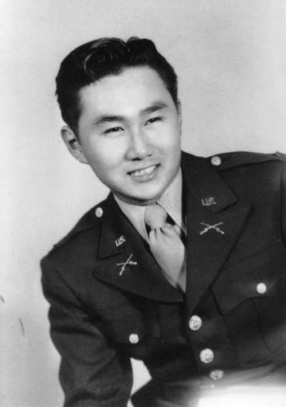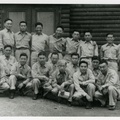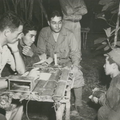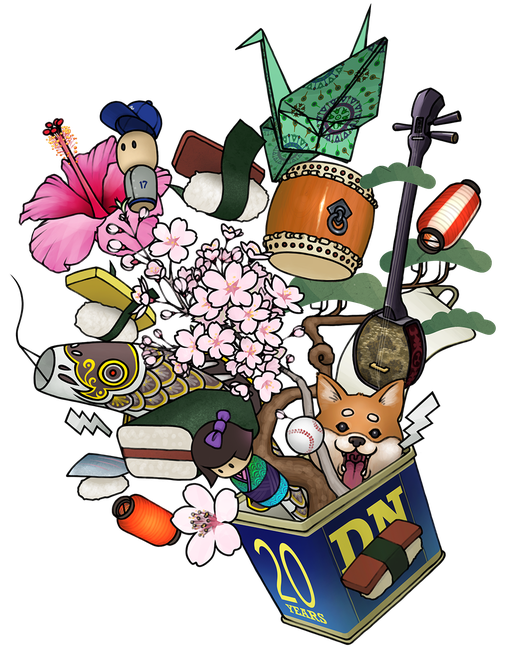Westport, Conn.—David Halberstam, a Pulitzer Prize winning author of the Best and the Brightest, wrote the Coldest Winter, a story of the Korean War. He was highly impressed by his interview of Gene Takahashi, a platoon leader in the Korean War and later in life an executive of International Business Machines (IBM). Halberstam said Takahashi “is a wonderful man who should be celebrated.” Takahashi and his family were incarcerated in an internment camp during WW II and subsequently settled in Cleveland, Ohio.
Takahashi served twice in Korea. He served in the Korean Occupation for 18 months following his enlistment at age 17 and being commissioned as a 2nd Lieutenant. The first lesson he learned was despite President Harry Truman’s affirmation of Nisei loyalty, racism and prejudice continued to be prevalent after WW II. His company commander, a West Point graduate and a racist, gave Takahashi every miserable assignment the Company had. Takahashi decided there was nothing like adversity to strengthen a person’s character. He accepted all the abuse and order, carried them out, and felt he emerged as a much tougher officer. Following his discharge, he obtained a bachelor’s degree. When the Korean War broke out in 1950 he was recalled to active duty and assigned to Korea, where he was platoon leader of Love Company, a segregated African American unit, 9th Infantry Regiment, 2nd Division.
According to the 9th Infantry Regiment journal, on November 25-26, 1950, the Regiment was at the Yalu River area and in the most forward part of the formation was Company L and at the tip was Takahashi’s 2nd platoon. At 9:30 PM on November 25, 1950, marking China’s entrance into the Korean War, the 2nd Battalion was attacked by a large number of Chinese soldiers and, despite the defensive fire, succeeded in over running Takahashi’s battalion command post shortly after 4:00 AM on November 26th. During the same period the 3rd Battalion was under intense fire along with Co. K and Co. L were forced to withdraw with an undetermined number of casualties. By 3:00 PM, November 26th, the entire 9th Regiment had been forced to withdraw and took defensive positions across the Chongchon River.
Takahashi and his platoon fought fiercely to stave off the Chinese so his company could retreat, however, when his unit was overrun, Takahashi and his master sergeant were captured and taken as prisoners. (It crossed his mind that he had the dubious distinction of being a prisoner of war of two countries, the Poston, Arizona, concentration camp and now China.)
They were led to the Chinese army headquarters for interrogation. The Commander couldn’t believe that a Japanese could be an officer in the U.S. Army and thought Japan had entered the war. Takahashi was finally able to convince them that he was an American. Following questioning, Takahashi and his master sergeant were taken by 2 guards and being marched toward China. Takahashi didn’t want to go to a Chinese prisoner of war camp and devised an escape plan. At the crest of a hill he and his sergeant jumped the guards and rolled down the hillside. There was a burst of gunfire and that was the last he saw of his sergeant who was slated to be discharged in a few months. The sergeant later died in a Chinese prison camp.
After his escape, Takahashi hid by day and traveled at night. Along the wayside he found a Korean hat, cape, and sandals, wore them, and snuck into a line of refugees heading south. When he reached safe territory he peeled off and found his way to Kunuri where he found the remnants of his company and later to the 2nd Division headquarters in Seoul.
Takahashi learned that his Co. L had sustained 95% casualties and he was the only surviving officer. He helped reorganize and train Co. L. Four months later Co. L returned to combat duty. Takahashi was hit by machine gun fire, however, medics could not come to his aid due to intense enemy fire. He saved his own life by applying a tourniquet he learned as a Boy Scout. (Takahashi felt his Boy Scout training was instrumental in helping him in his escape and survival.)
Takahashi considered the Combat Infantryman’s Badge his most coveted medal. He was also awarded the Bronze Star and the Purple Heart Medal. He might have qualified for the Silver Star or the Distinguished Service Cross for his actions on November 25-26, 1950, however, that was not possible because no eye witnesses were left to attest to his heroism, nor the company commander to write the citation.
Following his hospitalization and discharge in 1952 Takahashi obtained a master’s degree. He joined IBM in 1957, the first Asian American to be hired by that company, as a systems engineer and retired in 1989, after serving as a director of litigation in IBM antitrust cases. Takahashi was a JAVA life member.
* The JAVA Research Team thanks Gene's widow, Violette, for contributing to this article and sharing his story.
* This article was originally published in JAVA Advocate in Spring 2014 Volume XXII - Issue I.
© 2014 JAVA Advocate











